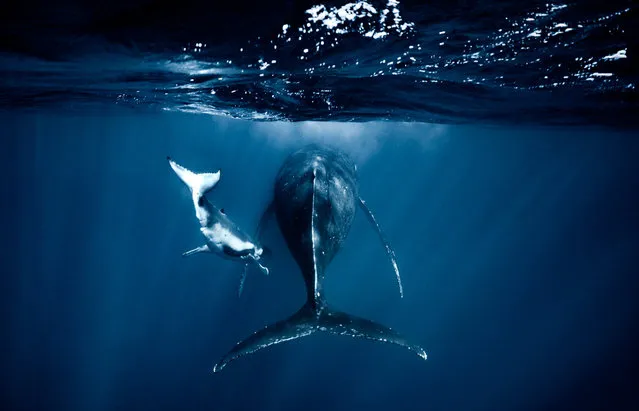
With the humpback calving season drawing to a close, here’s a look at some of Rita Kluge’s distinctive marine photos from the south Pacific. The Sydney-based photographer fell in love with whales after witnessing southern rights from the New South Wales coastline as they travelled to and from their feeding grounds in the Antarctic. She has since been to Tonga, where humpbacks breed and calf in winter months, to photograph them in the water. “To look into a whale’s eye is life-changing”, she says. “When you’re right next to dolphins, sharks, whales, turtles – (close enough) that you could reach them for a tickle – it’s not surprising that you just fall for them”. (Photo by Rita Kluge/The Guardian)
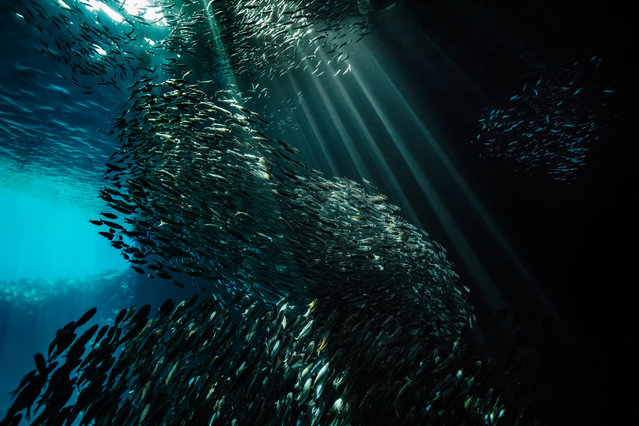
“You’re kind of in a trance, like a dream. It’s not like the polluted or busy world we live in. It’s just pristine and quiet and pretty and still ... well, not if surfing with dolphins, of course”. (Photo by Rita Kluge/The Guardian)
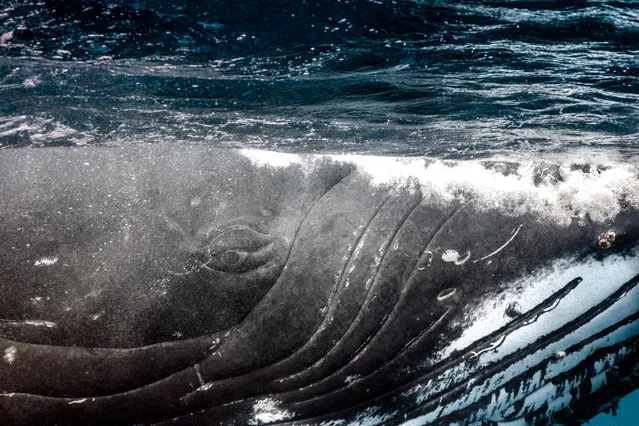
“You want to get close but not that close that you lose your gear. I mean, whales know not to hit you, but calves can get very, very playful and you just need to be able to read their body language and pull back in time. When a calf is swimming straight at you, (the guides tell you) don’t move, but watch their tail as they’re still a bit clumsy”. (Photo by Rita Kluge/The Guardian)
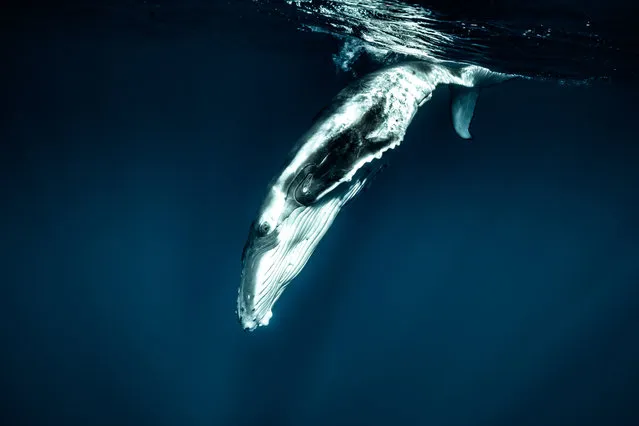
“Every whale is different. You get a feeling of what to do”. (Photo by Rita Kluge/The Guardian)
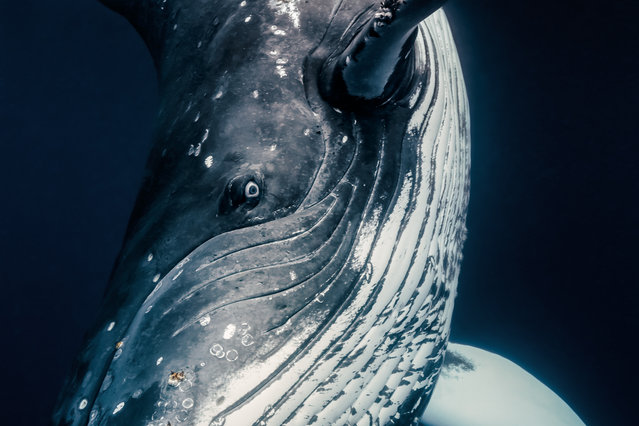
“To look into a whale’s eye is life-changing and humbling. Well, it’s the same with dolphins but they are mostly very fast in the water. A whale’s eye is unexpectedly looking, just like a human eye, kinda checking you out”. (Photo by Rita Kluge/The Guardian)
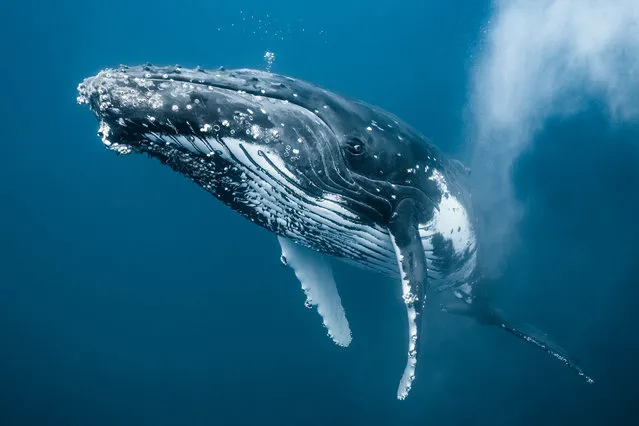
“You stop photographing and wave to them just to say thank you. It’s emotional, maybe like a blessing. I can’t explain it better, you just have to go and see yourself”. (Photo by Rita Kluge/The Guardian)
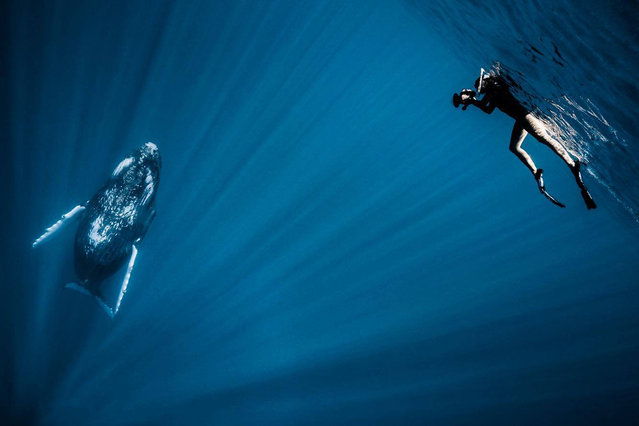
“Looking through that wide-angle lens you get a shock or thrill to see how close you actually are. We are just little dots in the water next to a 14 metre whale which weighs about 35 to 40 tonnes”. (Photo by Rita Kluge/The Guardian)

“This is Lisa free-diving in Swallows Cave, Tonga, the most beautiful stopover”. (Photo by Rita Kluge/The Guardian)
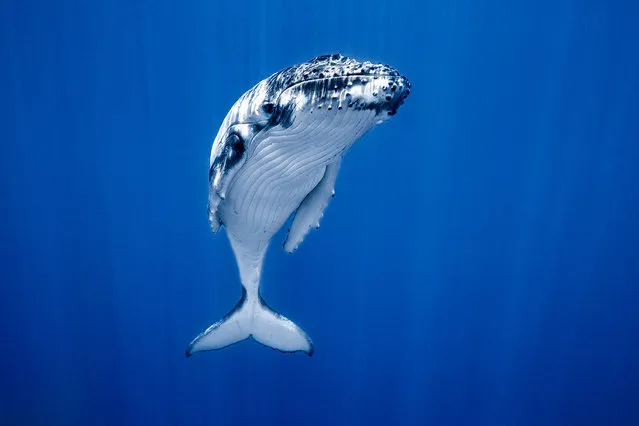
“I had a totally unreal moment when a 4 metre humpback calf, about 2-3 months old, was going straight towards me. I thought, wow, that’s cool! Then he stopped right in front of me and I started to giggle. He was standing upright, he looked like he was asking: ‘Hey will you play with me?”. (Photo by Rita Kluge/The Guardian)
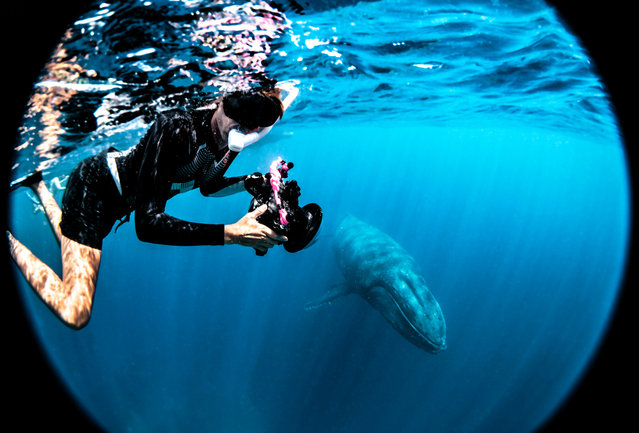
“I think especially with me being from inland Germany (where it’s) landlocked, I’m even more stoked (to be doing this). I think I’m in love with whales. Haha”. (Photo by Rita Kluge/The Guardian)
26 Oct 2016 11:09:00,
post received
0 comments
